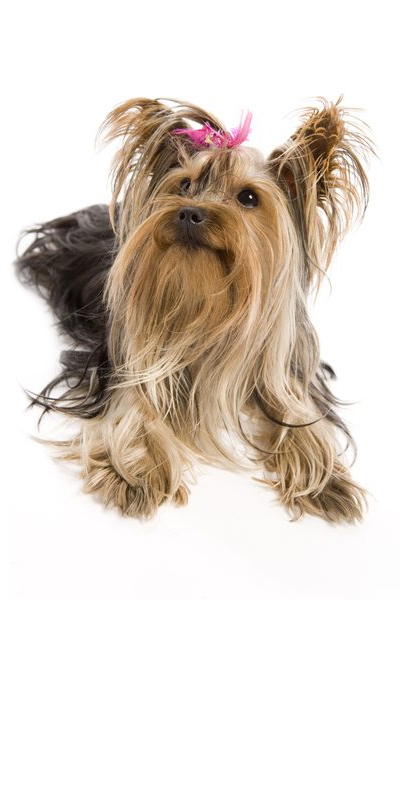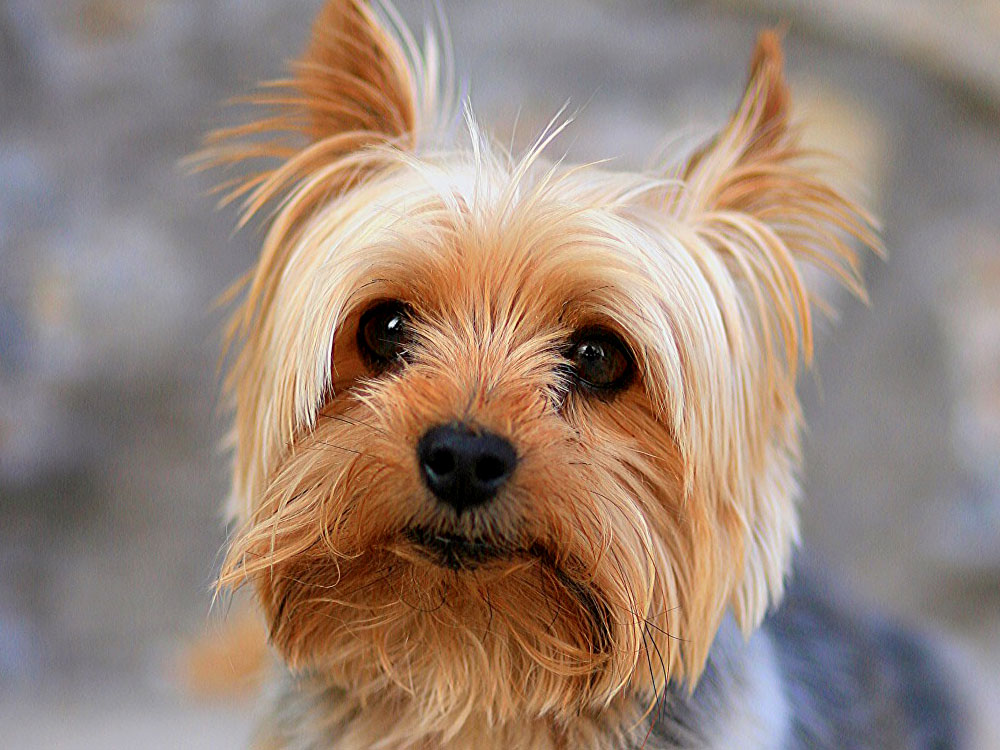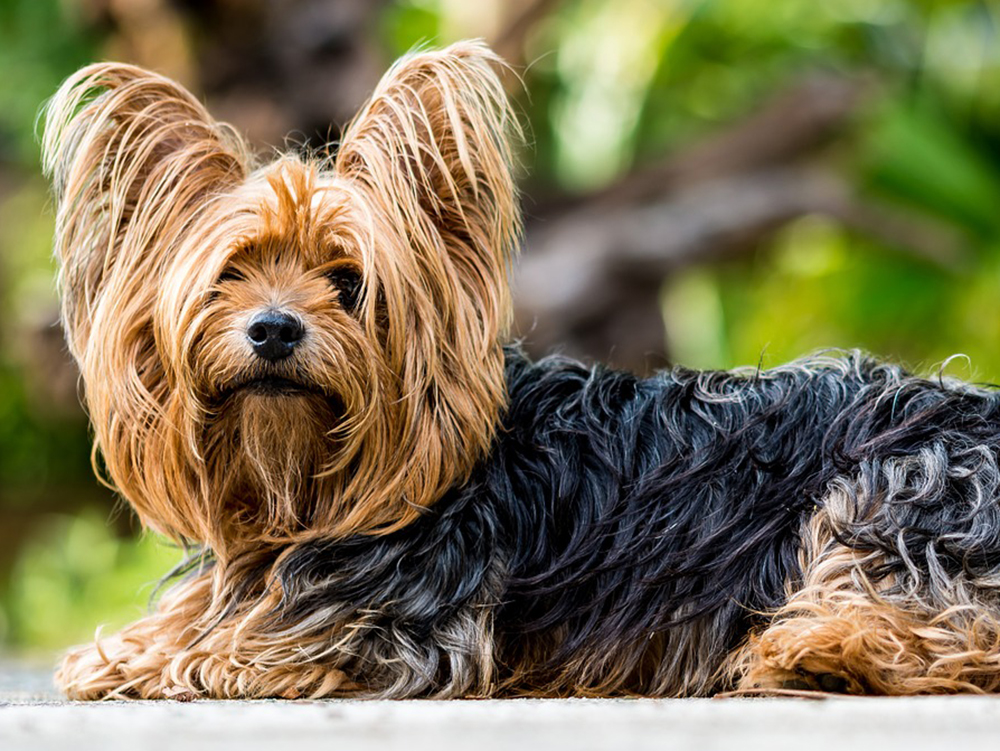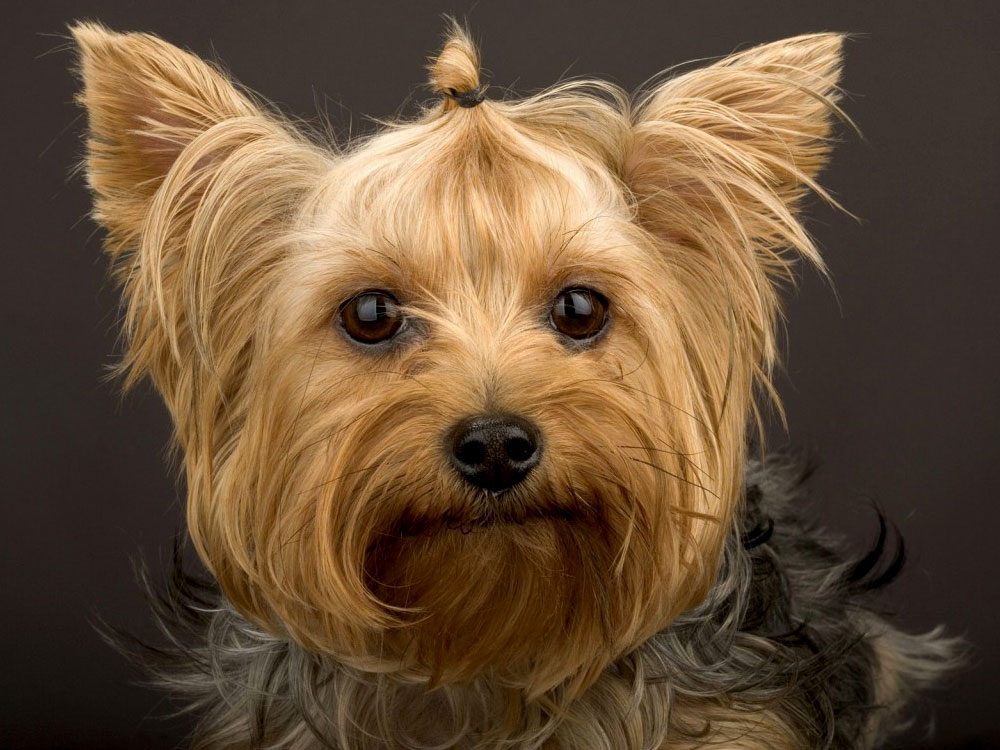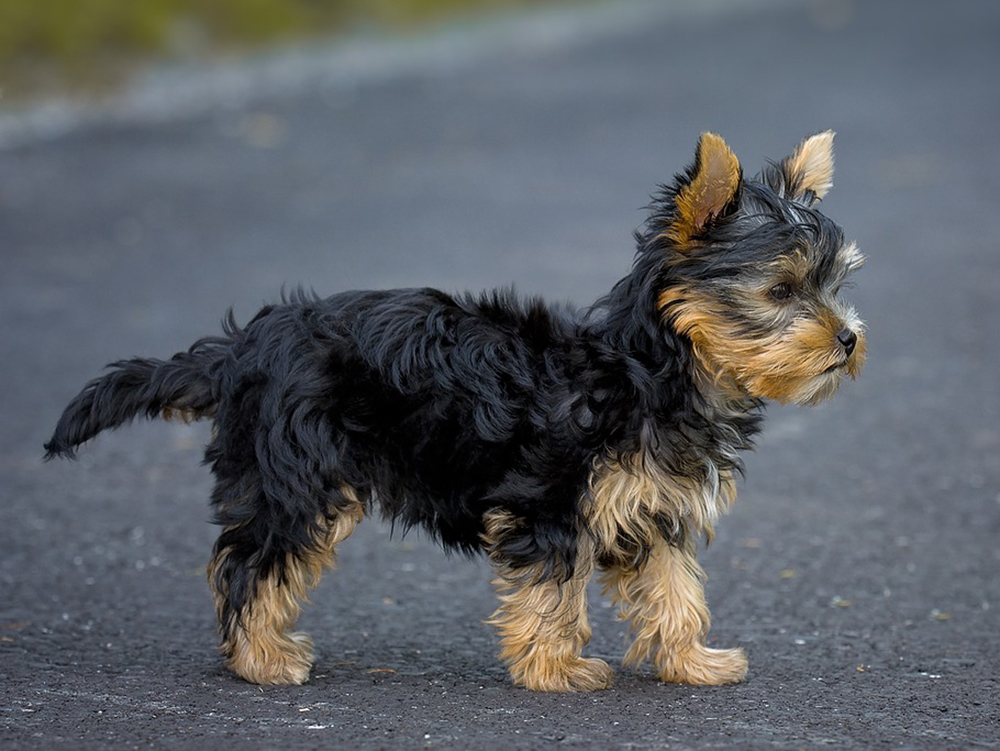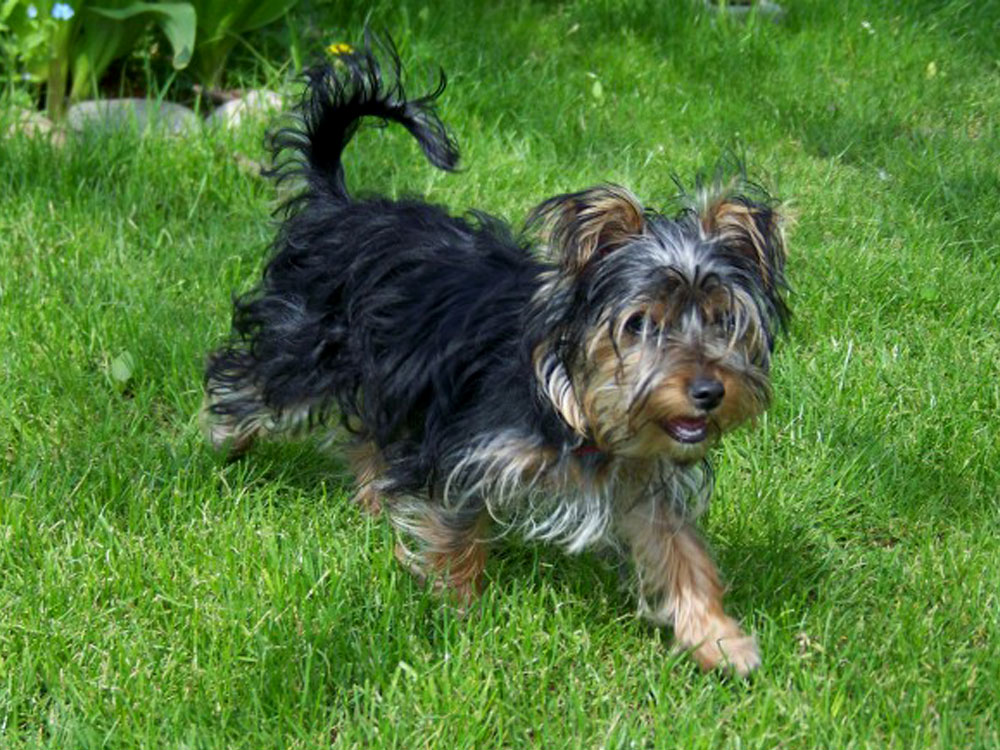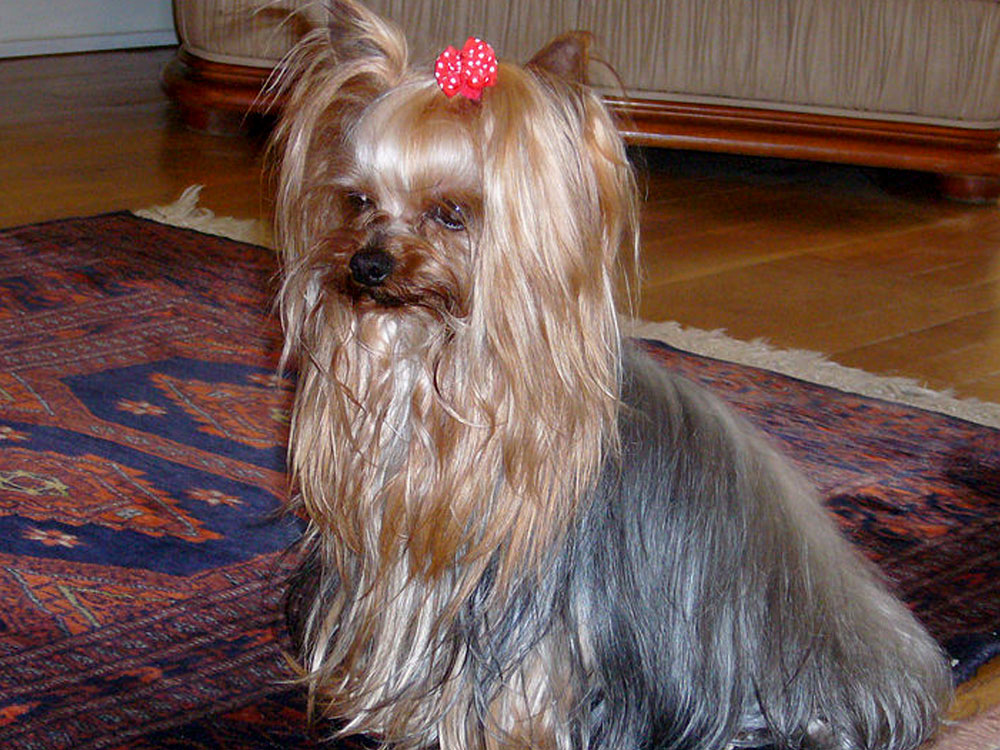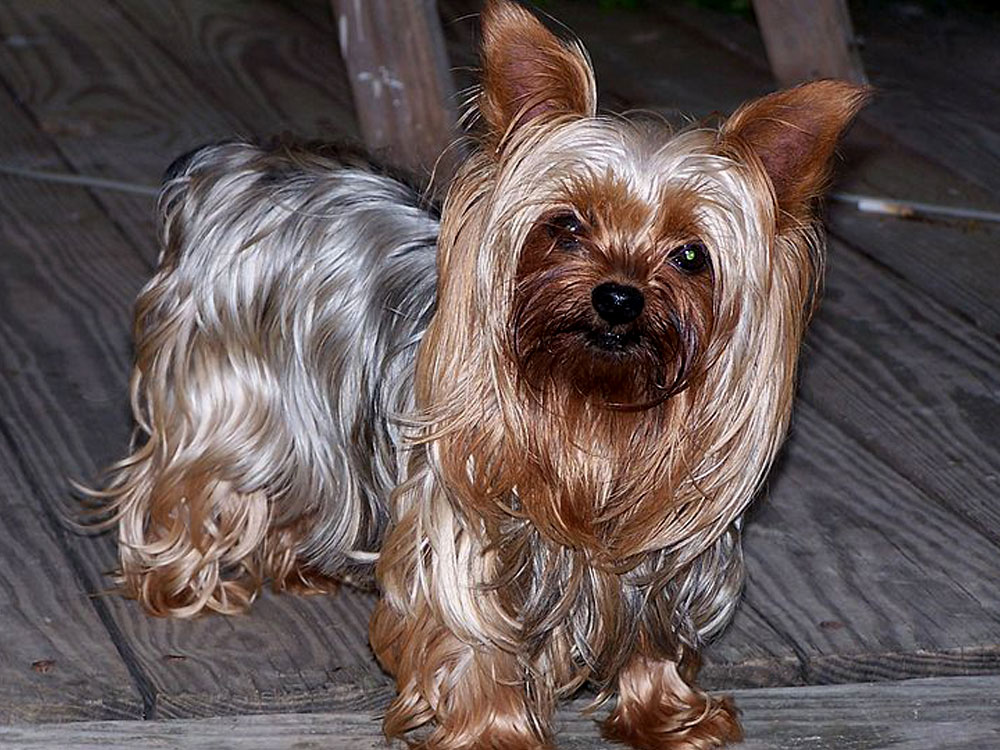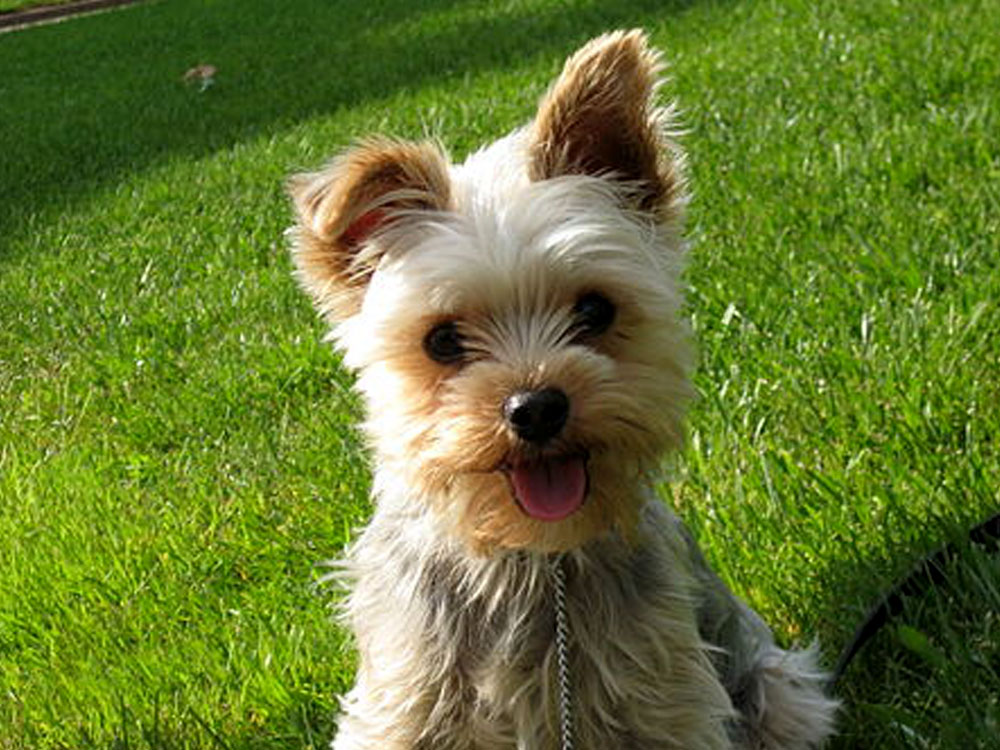
Yorkshire Terrier Breed Pictures
Vital Breed Stats
| Height: | 20 - 23 cm M | 20 - 23 cm F |
| Weight: | 2 - 3 kg M | 2 - 3 kg F |
| Breed Group: | Pastoral Dog Group |
| Life Expectancy: | 15 - 18 years |
| KC Registered: | No |
Breed Characteristics
| Size: |  |
| Grooming: |  |
| Exercise Level: |  |
| Trainability: |  |
| Barking Level: |  |
| Good with Children: |  |
| Good with other pets: |  |
| Affectionate: |  |
| Protective: |  |
| Cost to Keep: |  |
Give a thumbs up if you love the Yorkshire Terrier

0
More About the Breed
History
The Yorkshire Terrier originated in Yorkshire, England in the 19th century. It was bred to catch rats in cotton mills, mines and factories. It is believed that they came from the larger Clydesdale Terriers or Paisley Terriers brought by Scottish workers. The dogs were then crossed with the Skye Terrier, Water Terrier and Maltese.
A dog named Huddersfield Ben, a Paisley-type terrier owned by Mary Ann Foster, became very popular in the 1860s. Dog experts considered it the father of the Yorkshire Terrier breed. The Yorkshire Terrier was recognised by The Kennel Club in 1874.
Appearance
The Yorkshire Terrier is one of the smallest dogs in the world. It weighs 4 to 7 pounds and stands 20 to 22 centimetres at the withers. It has a small head, a strong jaw, medium eyes, a short muzzle, v-shaped ears, and a compact body.
The breed is easily distinguished because of its moderately long and perfectly straight hair, which gives it an elegant appearance. It has a fine and glossy texture that should be tan on the head, combined with steel blue, steel grey or black. The hair on the head is golden tan that goes deeper on each side, around the ears and muzzle, on which hair is longer.
Grooming
The Yorkie’s coat is mainly made up of fine hair, rather than a fur-like texture. It is considered hypoallergenic and almost does not shed, only losing small amounts when brushed or bathed. Keeping the traditional long coat is very high maintenance. Grooming can be tedious as the coat should be combed 2 to 3 times daily to avoid tangles and mats. It needs to be bathed at least once a week. After bathing, remember to dry it completely as Yorkies could not tolerate cold temperature and are prone to shivering. Professional grooming on a regular basis will generally make their coat more manageable. If they are not being shown, clipping could also keep their coats neat and clean.
Proper grooming of Yorkies generally includes regular baths, brushing and combing, and nail care. Check for any abnormalities such redness and unusual odour in the ears. These are signs of possible infection. Don’t hesitate to bring your Yorkie to the vet if you notice anything not normal.
Temperament
Intelligence
Yorkies can live with other pets if they grow up together. However, smaller animals can be considered as their prey since they were bred as hunters. Also supervise interactions with bigger dogs because they don’t have a good grasp of their small stature.
Yorkies are generally easy to train since they are quick learners and enjoy being the centre of attention. However, they can be challenging to housetrain because some owners tend to tolerate their “accidents” since they are easy to clean up. To correct this, train them to relieve themselves in the right areas and reward them after.
Nutrition
Choosing the type of food you feed your dog is entirely up to you. High quality dog food, whether dry or wet, is specifically formulated to meet the needs of dogs. Check the labels and avoid buying cheap brands that contain chemicals and preservatives. If you choose to prepare or cook your dog’s food, make sure you do your research because even though you use fresh ingredients, you may still not provide the right amount of vitamins and minerals. Avoid giving table scraps and stick to your dog’s specific food. There are certain human foods forbidden and deadly to dogs such as chocolate, grapes, avocado, chicken bones, fatty and salty foods, etc. Better safe than sorry!
Consult your trusted veterinarian before giving your dog any supplements as some may cause harm than good. Some vets do not encourage supplements when you are feeding high quality dog food that contain all the nutrients your canine needs.
Always make sure that your dog has access to fresh clean water and avoid giving them sweet human drinks like juice, soft drinks, tea or coffee.
Feeding
Health
Exercise
Cost of Ownership
Dog ownership involves a lifetime commitment and includes buying a lifetime supply of food, accessories, grooming equipment as well as regular veterinary visits. All these translate to a significant expense for the dog owner.
Yorkshire Terrier is among the top five most expensive breeds with an estimated cost of £25,400 over its lifespan of 14 – 15 years. If you think you are financially capable of owning a Yorkie, be prepared to pay anything from £450 to over £700 for a pedigree puppy. Annually, the costs can quickly add up to £800.
Yorkshire Terrier Breed Highlights
- Yorkies are small dogs and do not require much space.
- They easily adapt to new homes and environment.
- They are super smart, in fact one of the most intelligent dog breeds.
- Yorkies are hypoallergenic dogs that make them perfect for people with allergies.
- They are highly active and always ready to play.
- Yorkies do not require a lot of exercise.
